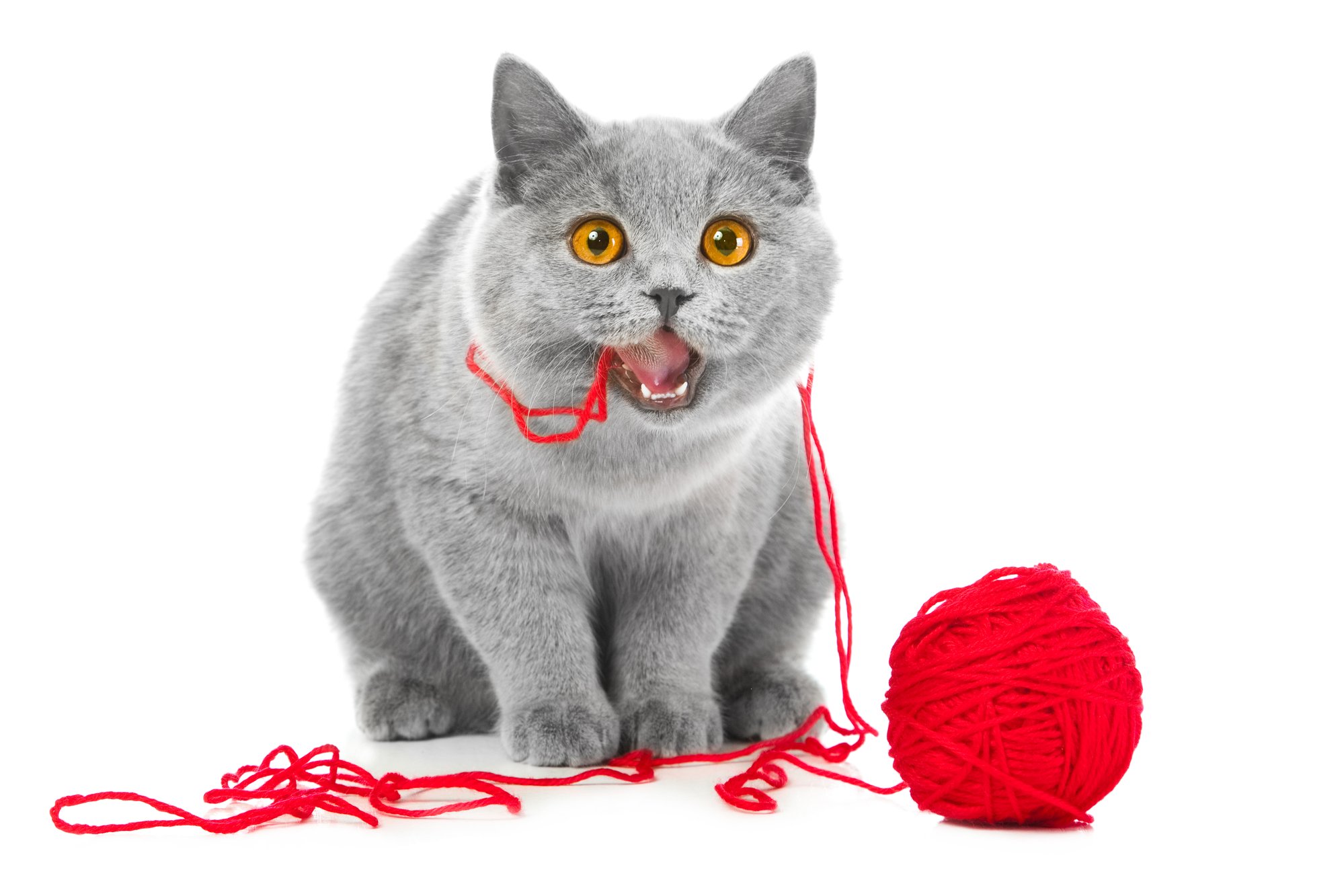tanitue | Deposit Photos

An oral ulcer is almost always a reason to visit your veterinarian. While causes can range from treatable to serious, it can be difficult for you to determine at home. Your veterinarian may do a swab to examine under the microscope or possibly sedate your cat for a thorough oral examination.
Some oral ulcers may be visible even with your cat’s mouth closed if her lips are involved. Typical signs include drooling, a decrease in appetite, and a bad odor from the mouth. Cats may approach their food bowls then back away due to the pain in their mouths. Some areas may look raised, with a distinct border, as is seen with eosinophilic granuloma. Cancers often have rough edges, are obvious “growths” that occupy space, and may emit a foul odor.
While feline calicivirus is considered primarily a respiratory pathogen, some infected cats will only show sores in their mouths. Other symptoms of calicivirus include sneezing and ulcers on the tongue, roof of the mouth, or lips/gums.
Stomatitis secondary to dental problems, such as feline gum disease or specific immune-mediated inflammation, may respond to dental care and medical therapy. For many cats, permanent relief is only achieved by the extraction of most of their teeth. While this may sound drastic, once healed, these cats usually eat well and are more comfortable.
Home-detective work may be needed if you suspect an electrical burn. Surprisingly, sometimes cats can chomp on a plugged-in “live” cord and walk away with just a mouth burn. Kittens are at greatest risk, but there are older cats who tend to chew on electric cords as well.
Eosinophilic Granulomas
Eosinophilic granulomas can look very aggressive but tend to be self-contained. According to William H. Miller Jr., VMD, Professor of Medicine, Section Chief of the Dermatology Service, and Medical Director of the Companion Animal Hospital, Cornell University College of Veterinary Medicine, the eruptions can include “oozing masses, yellowish-pink ulcerations, or big tumor-like bumps,” depending on their specific source. The lesions are typically raised, linear, clearly defined, and yellowish-pink in color, but there are variations in appearance.
“It can be a bump,” says Dr. Miller, “or a great big ulcer that looks like a tumor.” These lesions can emerge anywhere on a cat’s body, he says, but appear most frequently on the rear legs and in the mouth. They can sometimes be seen on a cat’s lips even when the mouth is closed.
These sores may disappear spontaneously, but treatment with steroids is often recommended for faster healing. If secondary infections develop, antibiotics may be recommended. These growths are usually reactions to allergens, such as insect bites or possibly foods. Repeated exposures to the allergens can lead to recurrence of the lesions, so owners need to minimize contact with biting insects (including fleas and mosquitoes) and avoid any known food allergens.
Strings and Things
Foreign bodies can also cause sores in feline mouths. Common causative items include sewing needles and string. Cats like to play with strings, tinsels, yarn, and threads. Sometimes as cats bite or chew on these items, they may be swallowed, but leave an end stuck under the tongue.
Fish hooks can also get stuck in the mouth but are usually easily visible. You may not notice a string under your cat’s tongue until an abscess develops and the swelling becomes noticeable or there is a foul odor.
Your veterinarian may need to sedate your cat and possibly do surgery under general anesthesia to remove the item. Long, linear foreign bodies that are ingested often require abdominal surgery with multiple intestinal incisions since these can cause “purse-string” injuries to the intestines. Luckily, once the offending item is removed, cats often undergo a complete recovery.
Oral Cancers
The mouth is the fourth most common site for feline cancers, with about 10 percent of all feline tumors occurring in this region. Squamous cell carcinomas account for close to 80 percent of these oral masses. Sadly, most of these cancers are malignant.
All cancers require veterinary evaluation/treatment, but not all cancers are malignant (i.e. characterized by uncontrolled growth and spread to other areas of the body).
Sometimes an external swelling is present—including around an eye. Bad breath is common, and eventually affected cats will show weight loss. If your cat allows you to inspect her mouth, you can sometimes see the growth.You might notice your cat drooling or avoiding food.
Cancer Prognosis
Surgery is often the first line of attack for oral cancers. Your veterinarian may recommend a biopsy first to determine the exact cancer type or simply suggest removal and pathology of the specimen.
Depending upon the type of cancer, follow-up radiation therapy may help, while chemotherapy is often not very effective. While recovering, most cats need a feeding tube to work around the healing mouth.
Sadly, the prognosis is guarded-to-poor for many oral cancers, and many families elect euthanasia upon diagnosis.




